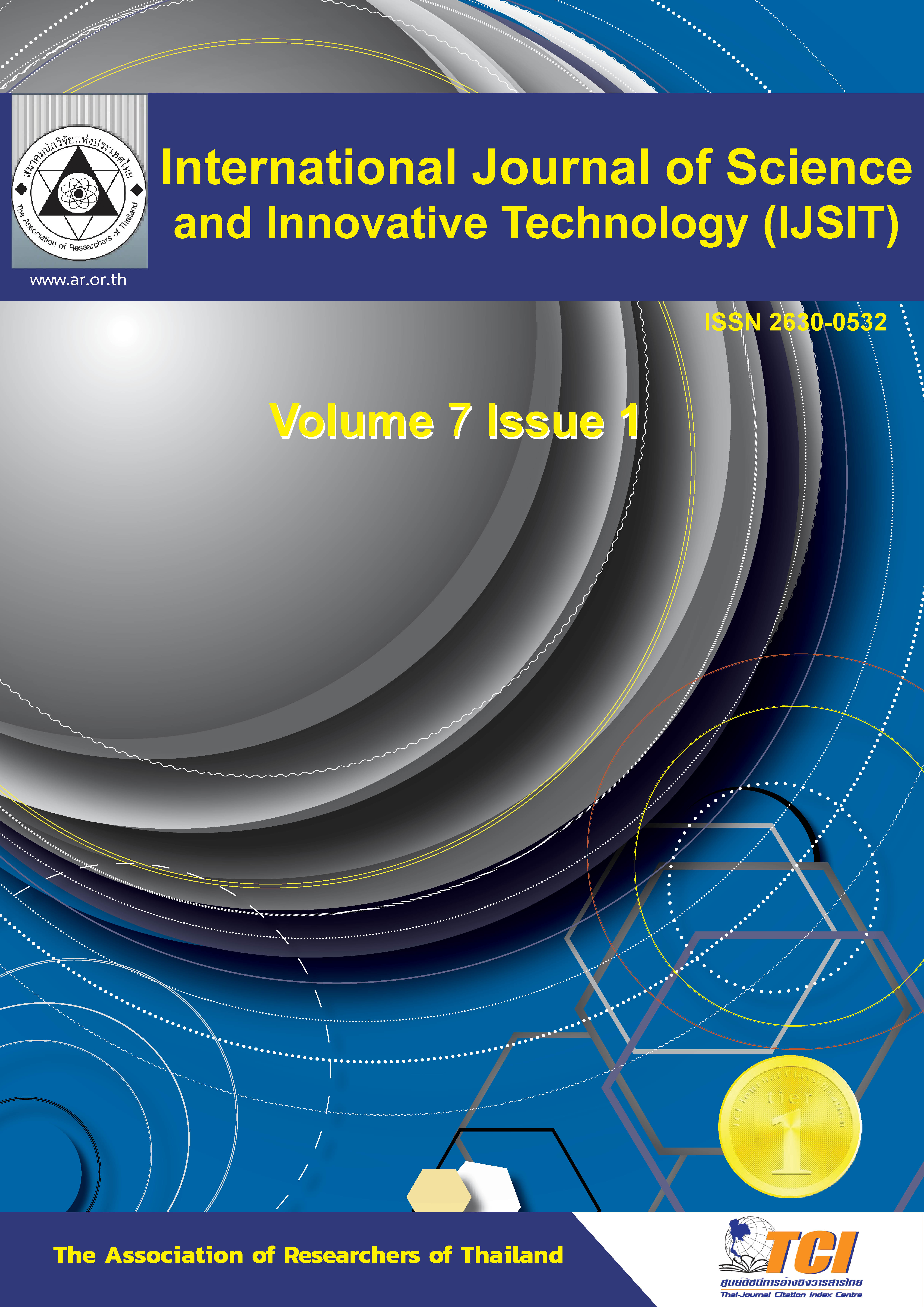Molecular Identification of Three Stingless Bees and Chemical Profiles of Their Honeys
Main Article Content
Abstract
Stingless bee is honey is widely consumed because it has high pharmacological properties. In addition, stingless bee honey also has color. It has a unique smell and taste as well. This depends on the ecosystem and species in the area where bees live. Thailand is a tropical country with a high abundance and diversity of plant life. But, studies on the composition of compounds substance in stingless bee honey are relatively few. Therefore, this research focused on the detection of the effective substances of the stingless bee honey in Narathiwat Province. From the study on the effective compound substances in 3 species of stingless bee honey composed of H. itama, H. bakari and T. laeviceps, using the liquid chromatograph quadrupole time-of-flight mass spectrometer (LC-QTOF MS) technique, the effective substances were examined negatively and positive ion modes found that the stingless bee honey contained of flavonoids, phenolic compounds, terpenes, di-amino acids and tripeptides and also other types of organic acids. The most effective substances found in T. laeviceps, H.itama, and H. bakari stingless bee honey were 191, 79, and 70 types, respectively. All of the substances found were both new substances that had never been reported before and substances that had been previously reported. For the amount of honey, it was found that the H. bakari species gave the highest amount and T. laeviceps honey has the highest percentage of sweetness. Storing honey at the room temperature increased acidity in all varieties. This research showed that the ecosystem and stingless bee species affect the chemical properties of honey including fermentation and the increasing of pH of the honey.
Article Details

This work is licensed under a Creative Commons Attribution-NonCommercial-NoDerivatives 4.0 International License.
References
Al-Hatamleh, M. A. I., Boer, J C., Wilson, K. L., Plebanski, M., Mohamud, R. & Mustafa, M. Z. (2020). Antioxidant-based medicinal properties of stingless bee products: Recent progress and future directions. Biomolecules 2020, 10, 923. doi:10.3390/biom10060923
Avila, S., Beux, M. R., Ribani, R. H. & Zambiazi, R. C. (2018a). Stingless bee honey: Quality parameters, bioactive compounds, health promotion properties and modification detection strategies. Trends in Food Science & Technology 81, 37–50. https://doi.org/10.1016/j.tifs.2018.09.002
Avila, S., Hornung, P. S., Teixeira, G. L., Beux, M. R., Lazzarotto, M. & Ribani, R. H. 2018b. A chemometric approach for moisture control in stingless bee honey using near infrared spectroscopy. Journal of Near Infrared Spectroscopy. DOI:10.1177/0967033518805254
Biluca, F. C., de Gois, J. S., Schulz, M., Braghini, F., Gonzaga, L.V., Maltez, H. F., Rodrigues, E., Vitali. L., Micke, G. A., Borges, D. L. G., Costa A. C. O. & Fett, R. (2017). Phenolic compounds, antioxidant capacity and bioaccessibility of minerals of stingless bee honey (Meliponinae). J. Food Compos. Anal. 63, 89-97. https://doi.org/10.1016/j.jfca.2017.07.039
Chew, C. Y., Chua, L. S., Soontorngun N. & Leeb, C. T. (2018). Discovering potential bioactive compounds from Tualang honey. Agriculture and Natural Resources, 52 (4); 361-365.
Francoso, E., Zuntini, A. R., Ricardo, P. C., Silva, J. P. N., Brito, R., Oldroy, B. P. & Arias, M. C. (2019). Conserved numts mask a highly divergent mitochondrial-COI gene in a species complex of Australian stingless bees Tetragonula (Hymenoptera: Apidae). Mitochondial DNA part A. doi.org/10.1080/24701394.2019.1665036
Hurtado-Burillo, M., Ruiz, C., May-Itza, W. de J., Quezada-Euan, J.J. G., & Rua. P. D. L. (2013). Apidologie 44. DOI:10.1007/s13592-012-0146-9
Lucena-Aguilar, G., Sanchez-Lopez, A. M., Barberan-Aceituno, Carrillo-Avila, C. J. A., Lopez-Guerrero, J. A., & Aguilar-Quesada, R. (2016). DNA source selection for downstream applications based on DNA quality indicators analysis. Biopreservation and Biobanking 14(4), 264-270. DOI:10.1089/bio.2015.0064
Michener, C. D. (2000). The bees of the world. Johns Hopkins University Press, Baltimore.
Ndungu, N. N., Kiatoko, N., Ciosi, M., Salifu, D., Nyansera D., Masiga, D. & Raina, S. K. (2017). Identification of stingless bees (Hymenoptera: Apidae) in Kenya using morphometrics and DNA barcoding. Journal of Apicultural Research. doi.org/10.1080/00218839.2017.1327939
Nisar, A., Bono, A., Ahmad, H., Lateef A. & Mushtaq, M. (2019). Simultaneous Identification of Phenolic Compound from the honey of stingless bee by using HPLC. Recent Adv. Biol. Med. 5. https://doi.org/10.18639/RABM.2019.961432
Pasupuleti, R. V., Sammugam, L., Ramesh, N. & Gan, S. H. (2017). Honey, propolis, and royal jelly: A comprehensive review of their biological actions and health benefits. Hindawi doi.org/10.1155/2017/1259510
Rao, P. V., Krishnan, K. T., Salleh N. & Gan, S. H. (2016). Biological and therapeutic effects of honey produced by honey bees and stingless bees: a comparative review. Brazilian Journal of Pharmacognosy 26: 657–664.
Sayusti, T., Raffiudin, Kahono, R., S., & Nagir, T. (2021). Stingless bees (Hymenoptera: Apidae) in South and West Sulawesi, Indonesia: morphology, nest structure, and molecular characteristics. Journal of Apicultural Research 60(1), 143–156. https://doi.org/10.1080/00218839.2020.1816272
Souza, E. C. A., Menezes, C & Flach, A. (2021). Stingless bee honey (Hymenoptera, Apidae, Meliponini): a review of quality control, chemical profile, and biological potential. Apidologie (2021) 52:113–132. DOI: 10.1007/s13592-020-00802-0
Vit, P., Pedro, Pedro, S. R. M. & Roubik, D. W. (2013). Pot-Honey: A legacy of stingless bees. Springer New York.


